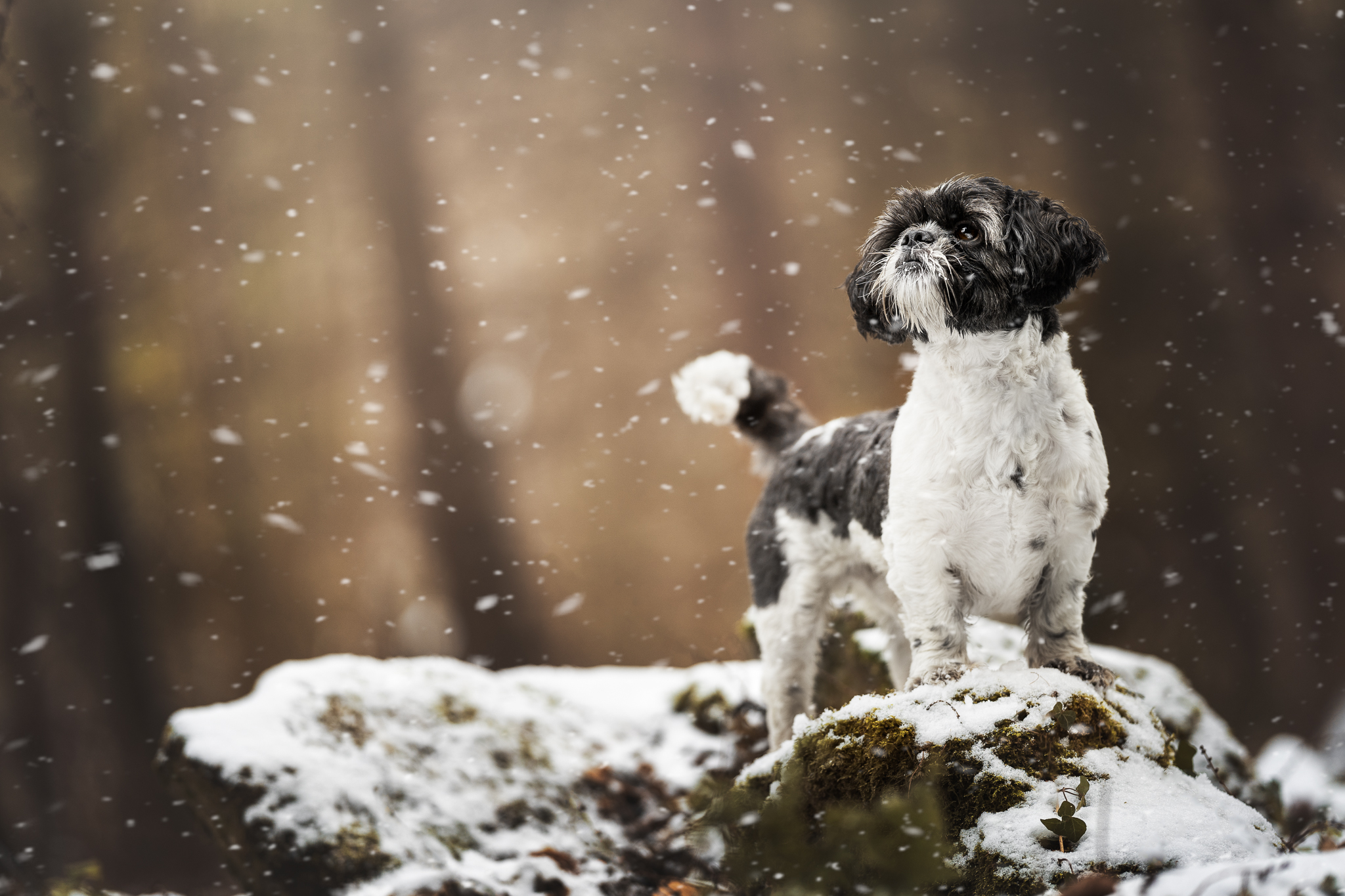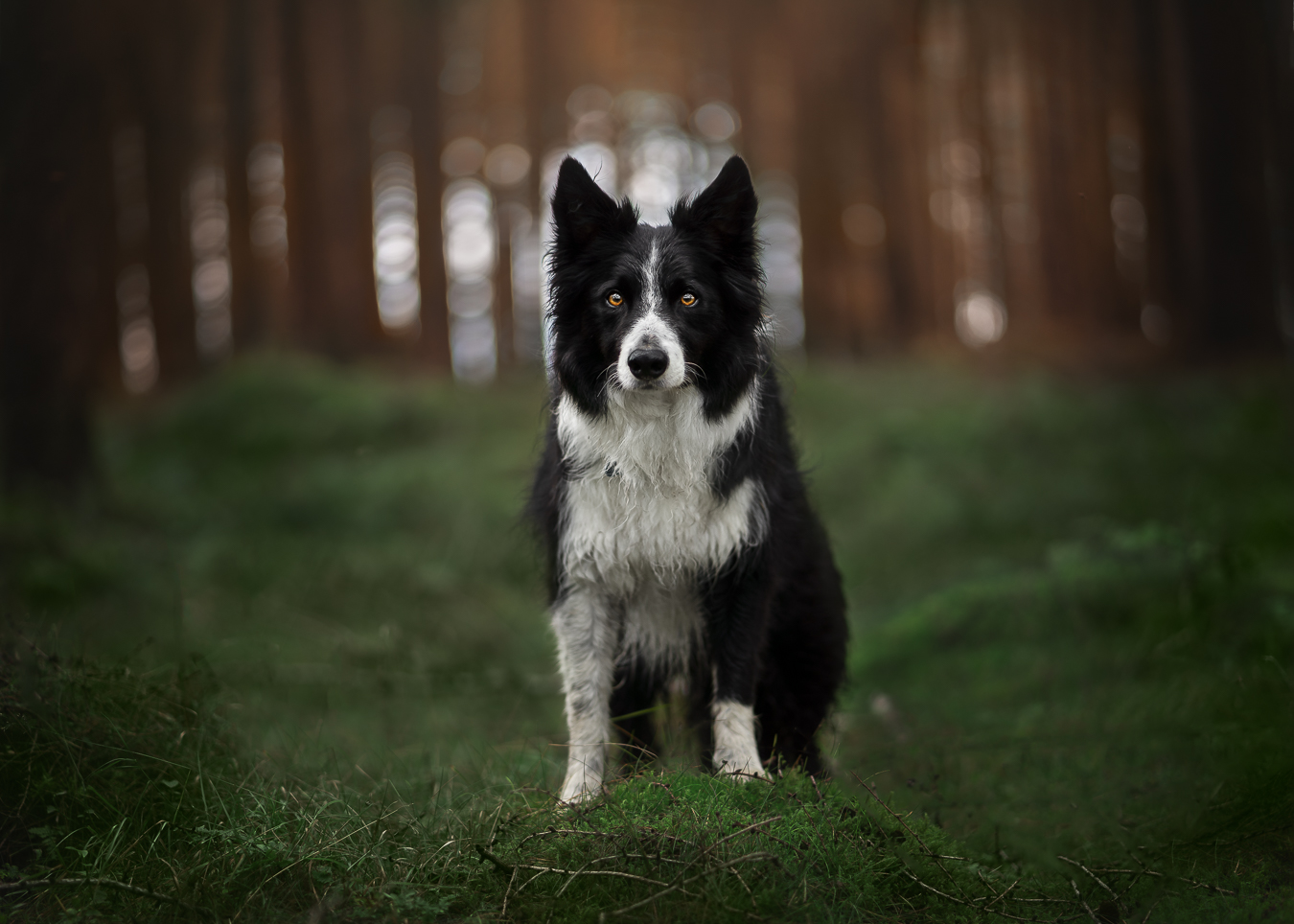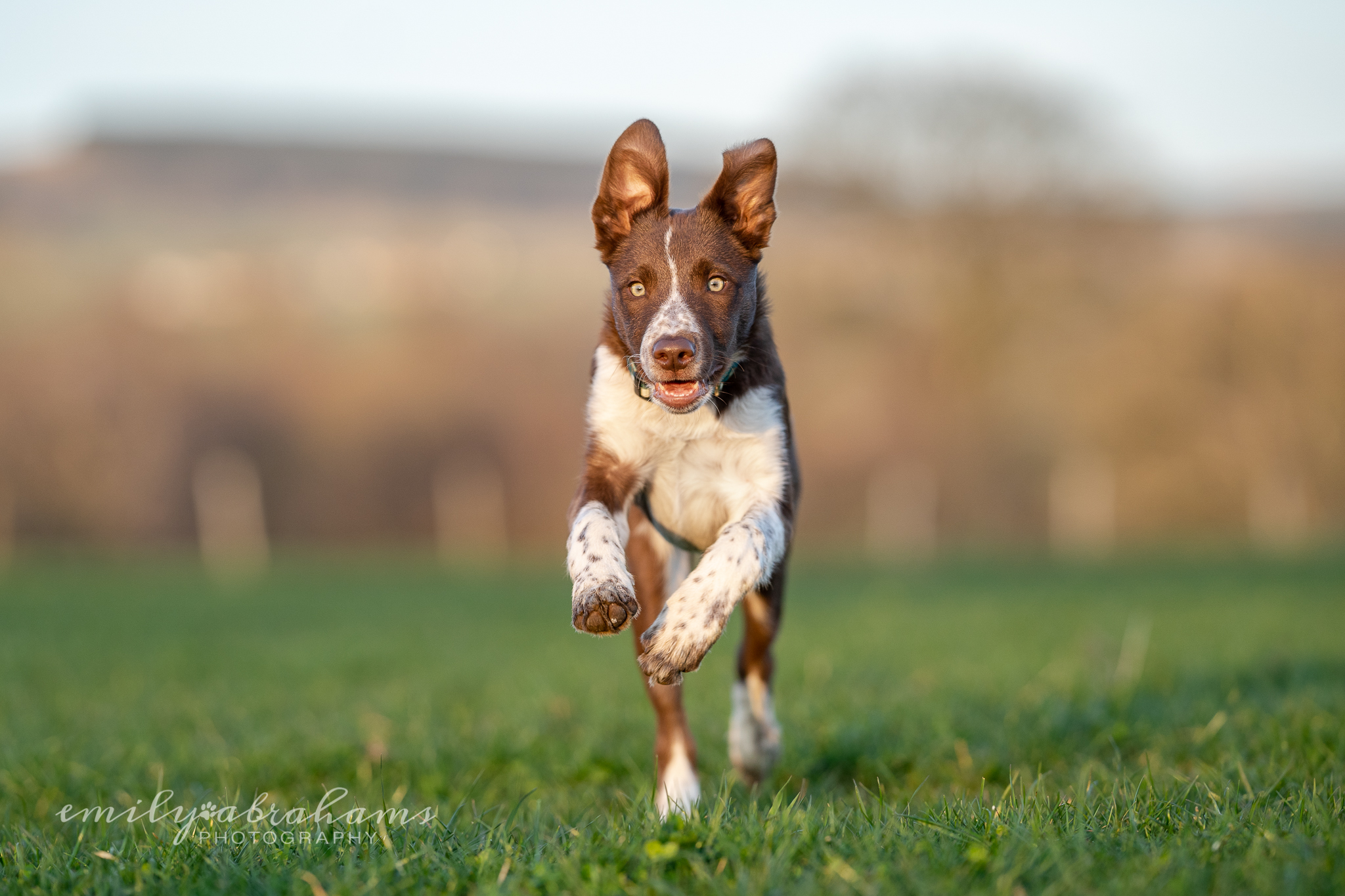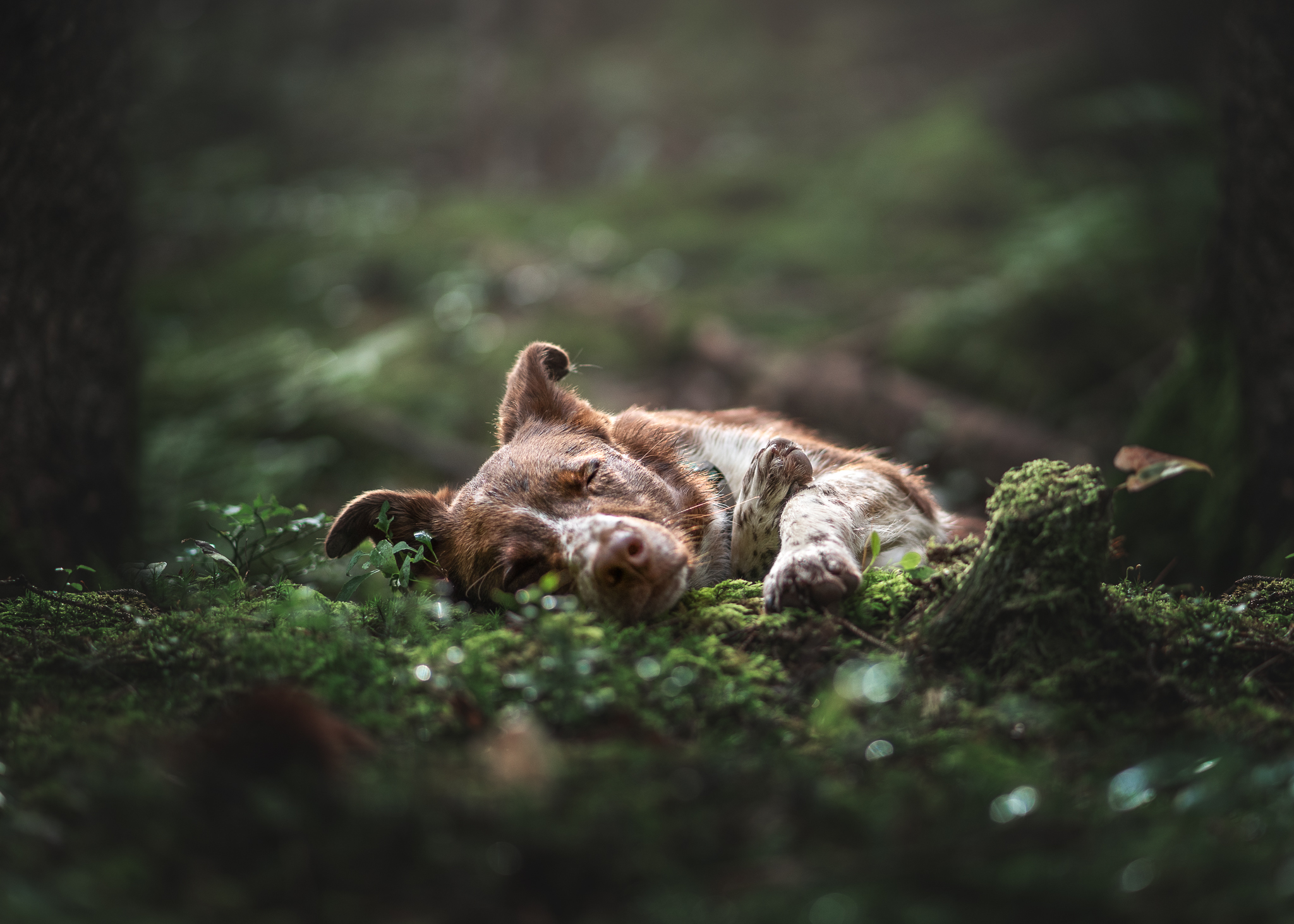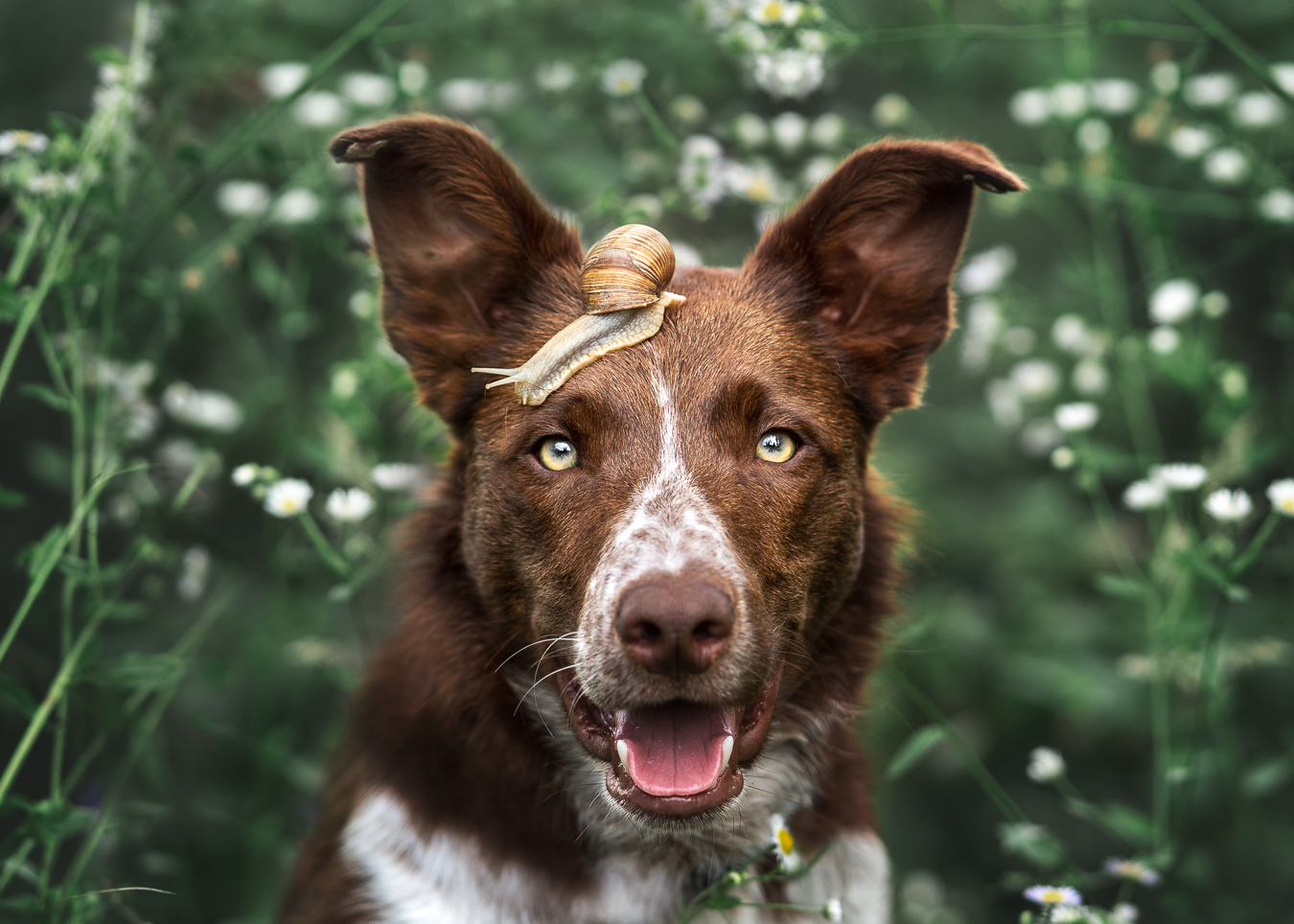Direct light is one of the most easiest lighting directions we can work with.
In this case, the light source (whether the sun or an area of light from the sky) is behind us, and shining on the dog.
This light may be harsh (full sun) or it may be soft (overcast, shade, or in the case of backlight – when the SUN is behind the dog, but there is open sky in front of the dog). In either case, having the dog’s face turned into direct light causes evening lighting – generally with no strong shadows or contrasts in light vs. dark.
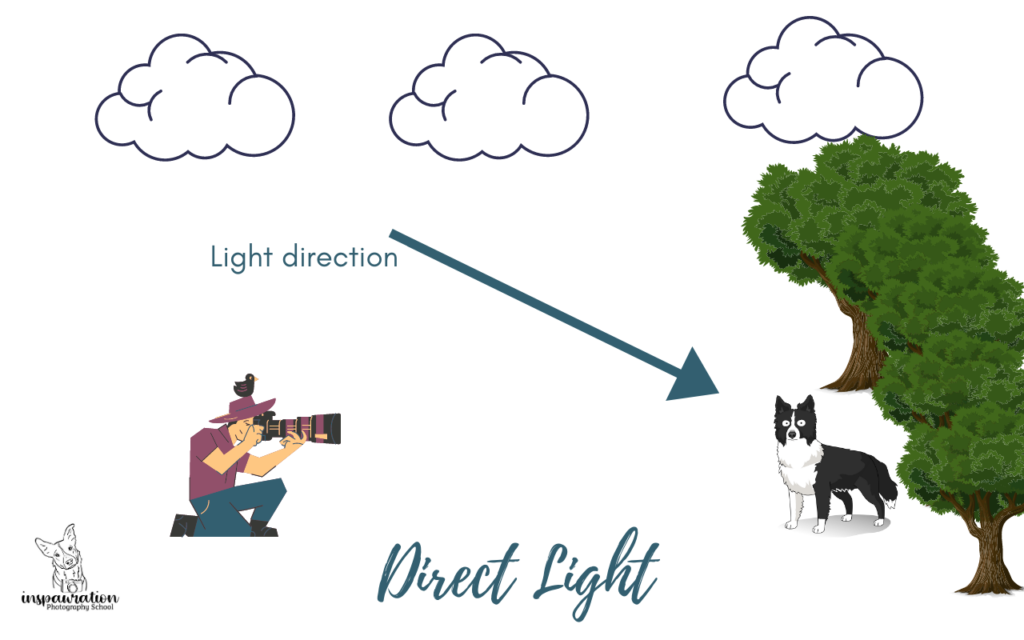
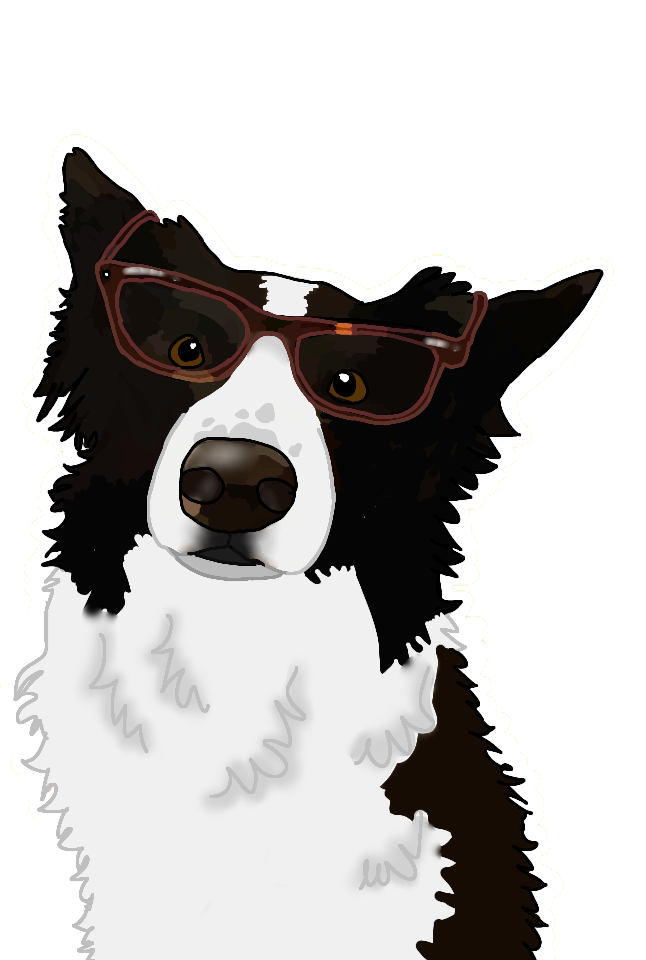
If we want the light falling on the dog’s face, doesn’t that restrict what kinds of photos we can create?
Of course not! Remember though that our goal is to create images where the viewer is drawn to the dog’s eyes, and that means illuminating the face.
If the light is falling on the dog’s butt, and the face is in shadow, then our eyes are naturally going to be drawn…
Oh no. Not ideal! Although in this case, the light is side light, as it’s coming from the right-hand side of the image, but the point remains.
Direct light is the easiest lighting direction for beginners, and a lot of your work will probably be using direct light in some way! There isn’t really too much to think about, except to have your dog’s face illuminated by the light (whether sun or sky).
If photographing in stronger light (basically, any time you are casting a shadow on the ground) be watching out for shadows on the dog’s face if it turns its face at an angle so the sun is no longer hitting it directly.
Examples of "Direct Light"
You’ll note that most of my examples here are still VERY soft light. This is due to my preference for these conditions – see the “Hello Sunshine” lesson. Most of these examples of “direct light” don’t include light strong enough to cast a shadow.




